What the Internet Was Like in 1996
In 1996, the internet became an integral part of society. Web portals were all the rage, e-commerce matured, web designers got new tools (like CSS and Flash), and web applications began to appear.
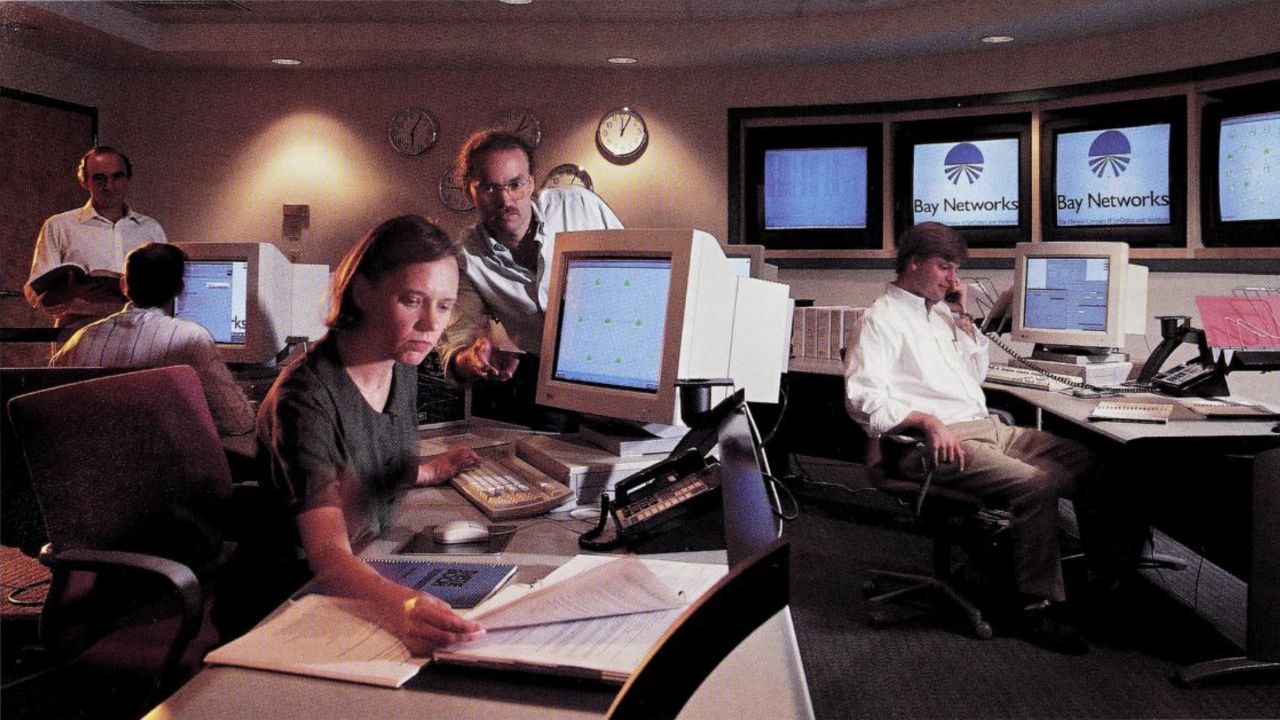
1996 was a year of continued growth for the World Wide Web, although the number of websites had yet to crack the 1 million mark — in June 1996 there were an estimated 257,601 websites on the Net. But the Internet was beginning to be recognized as an important part of society, with events such as NetDay96 and the Internet 1996 World Exposition drawing media attention.
The Internet 1996 World Exposition, organized by Carl Malamud, was promoted as the first "World's Fair" to be held on the Internet. Meanwhile, the first NetDay — held on March 9, 1996 — saw 20,000 volunteers help wire 20 percent of California schools to the Internet. President Bill Clinton and Vice President Al Gore spent that day at Ygnacio Valley High School.
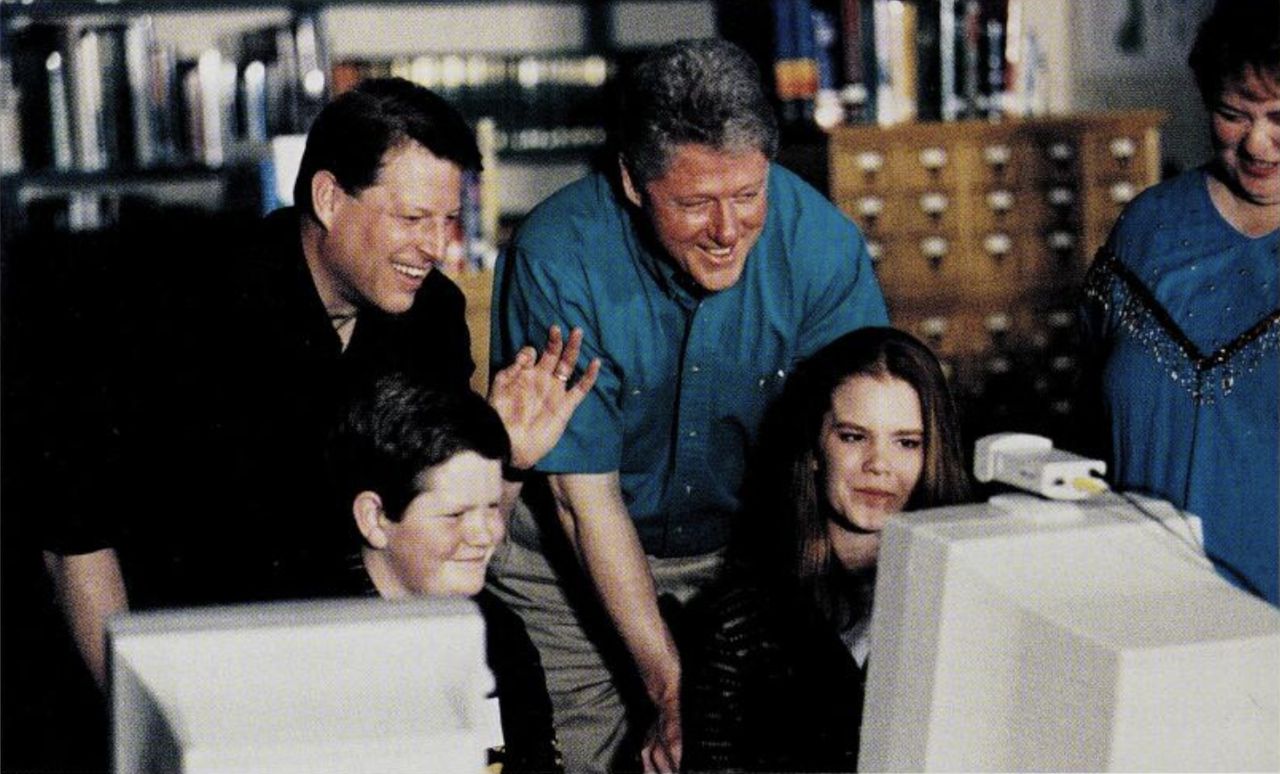
Portals
As the Net expanded, web portals was beginning to take hold of the dot-com economy. These were large websites that aggregated various types of information and services; including email, search, online forums, news, financial information, and more. Three of the main Internet search engines — Yahoo!, Lycos, and Excite — all went public in April 1996 and used the money to begin transforming themselves into web portals.
In a later Wired profile, Excite CEO George Bell said that “portals aren't a delivery mechanism — portals are the Web.” He defined portals as “an efficient starting point that allows you to cut through the confusion of the Web and get to the information you want.”
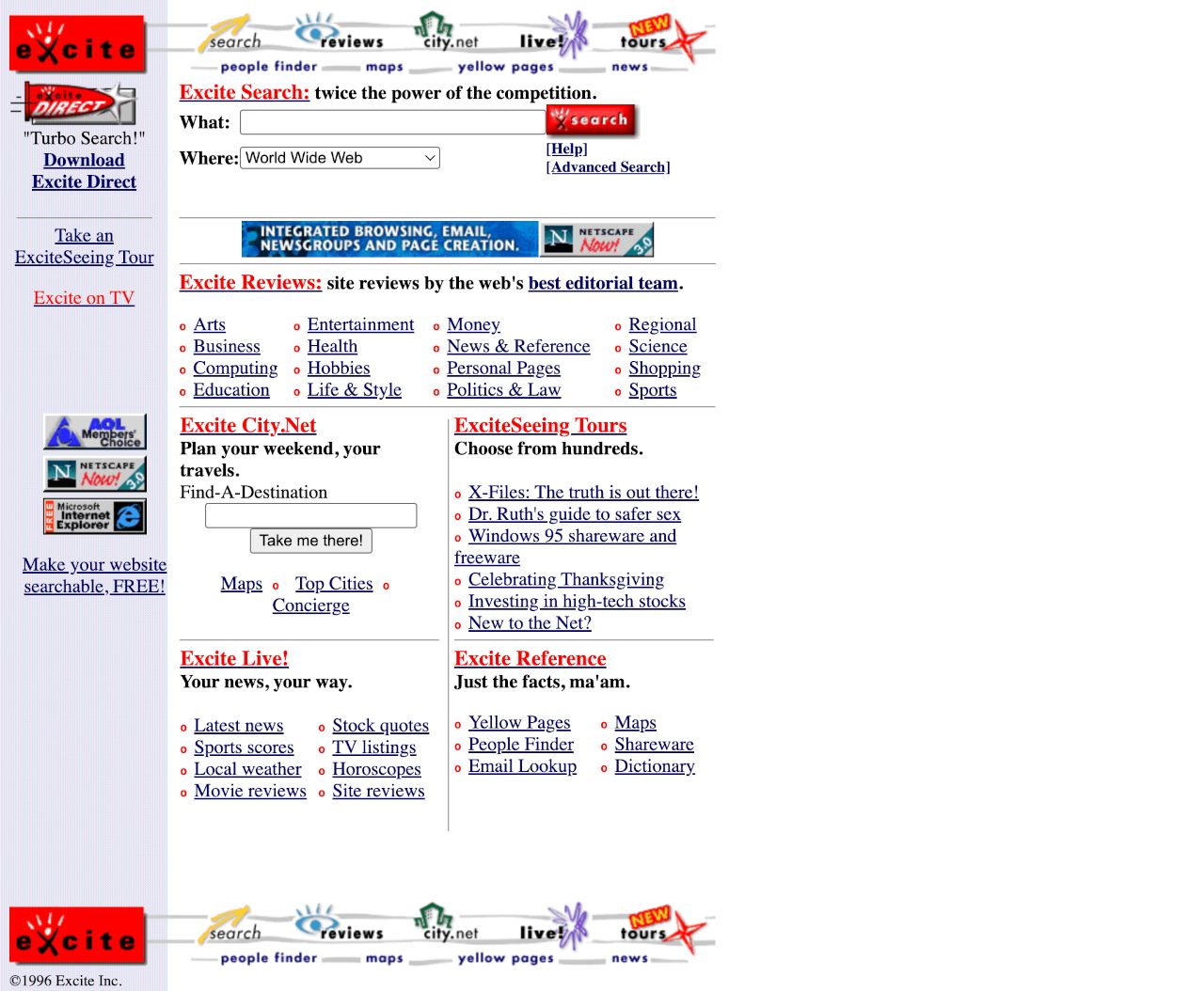
According to Bell, Excite was engaged in a “land grab” to “become that starting point." The web at this time had a frontier mentality and so land grabbing was an increasingly common metaphor used by entrepreneurs. Fuelled by venture capital and IPOs, companies like Excite had a grow-at-all-costs strategy — with the hope that once they’d grabbed enough virtual land, they could then extract rent from its users. Excite’s goal, said Bell, was to “get big fast” (this became another common maxim in the dot-com era, which the likes of Amazon and Facebook would also follow in years to come).
“Stickiness” was another buzzword at this time of the internet. Even though Excite’s website was theoretically a “starting point” to explore the web — since its core feature was a search engine — the actual goal was to keep users on Excite.com for as long as possible. That’s because the practical reality of a website of this scale was that it depended on advertising to generate revenue. To keep users on-site, looking at your ads, you needed to have compelling content. As Bell noted, “the differentiating factor between an Excite and a Yahoo! will be content.”
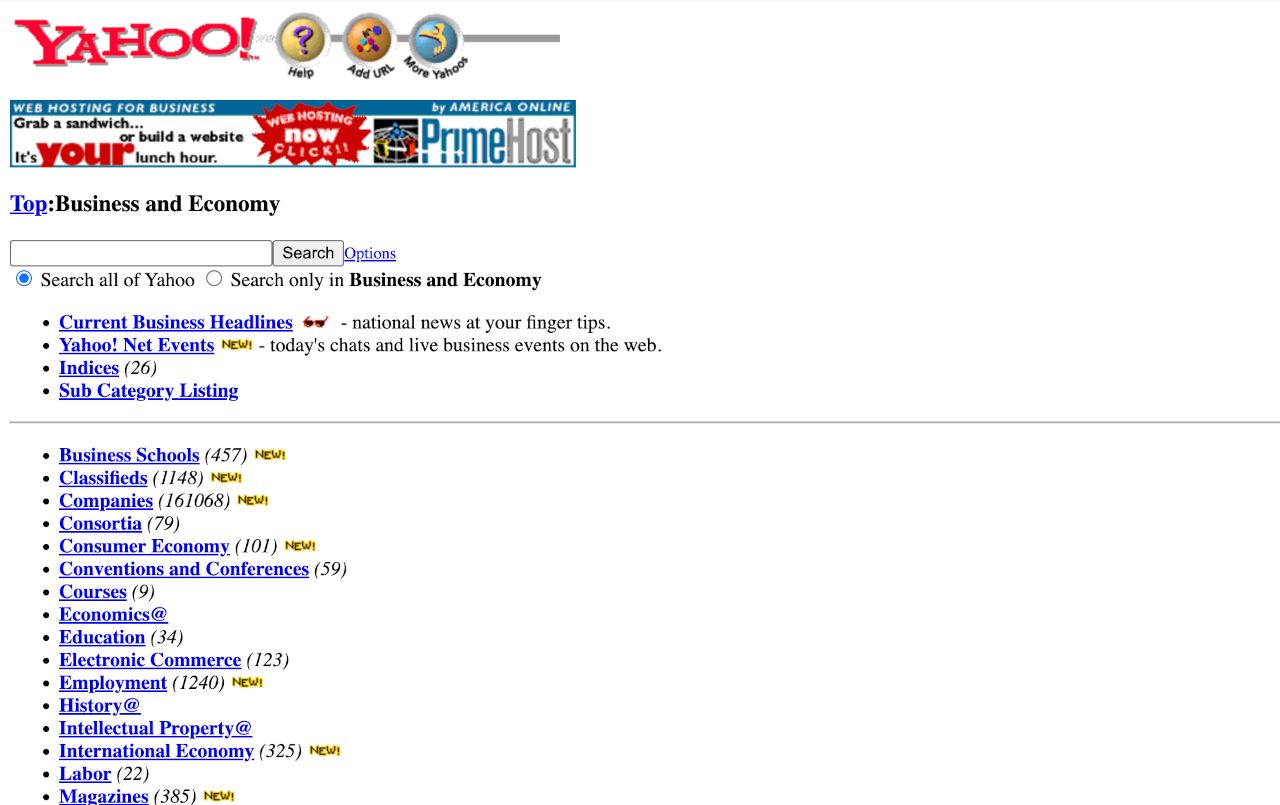
E-Commerce
After Amazon.com and eBay launched in 1995, e-commerce began to infiltrate mainstream culture. In May 1996, Amazon founder Jeff Bezos got his first profile in a large-scale newspaper. The Wall St Journal ran a story entitled "Wall Street Whiz Finds Niche Selling Books on the Internet," which included the following description of how the Web had brought something entirely new to the retail experience:
"Amazon has caught fire because, unlike most retailers, Mr. Bezos has found a way to use the Web's technology to offer services that a traditional store or catalog can't match. An Amazon customer can romp through a database of 1.1 million titles (five times the largest superstore's inventory), searching by subject or name. When you select a book, Amazon is programmed to flash other related titles you may also want to buy. If you tell Amazon about favorite authors and topics, it will send you by electronic mail a constant stream of recommendations."
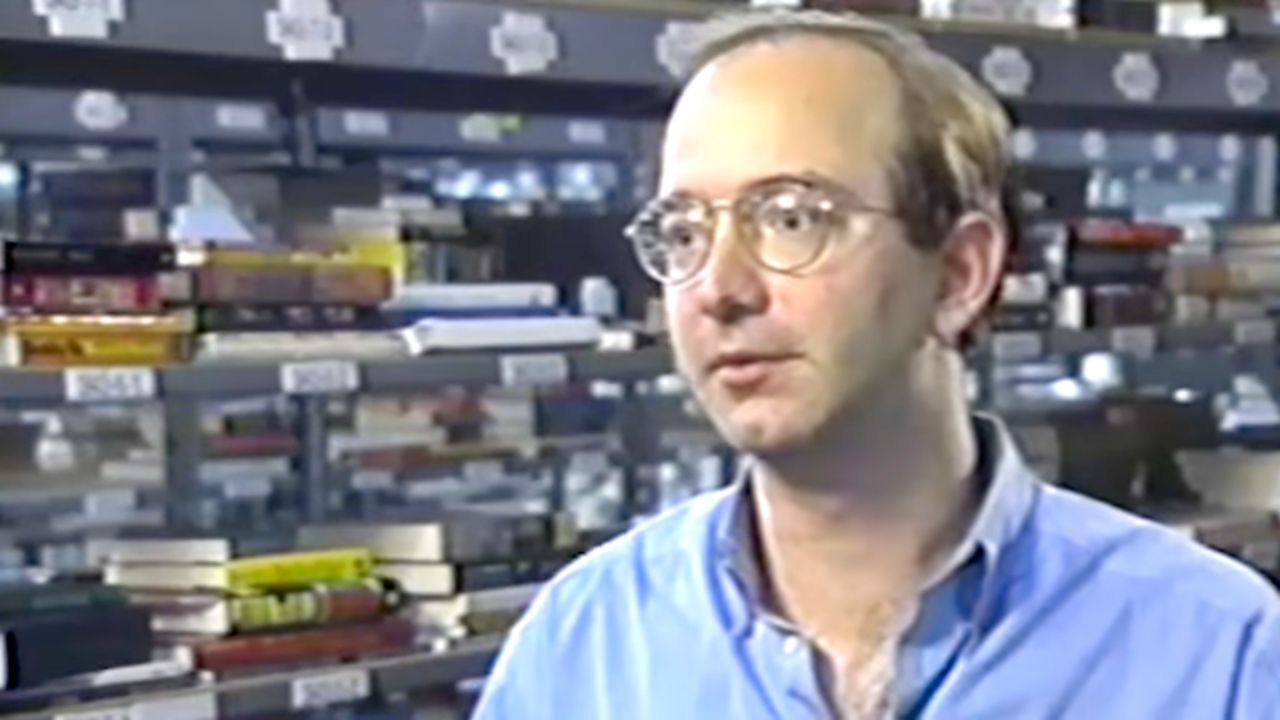
In addition to introducing people to online commerce, Amazon was experimenting with what would later be termed "affiliate marketing," by enabling other websites to earn a fee when they sent customers to Amazon to buy a book. As Brad Stone described in his book, The Everything Store:
“Amazon gave these approved sites an 8 percent commission for the referral. The Associates program wasn’t exactly the first of its kind, but it was the most prominent and it helped spawn a multibillion-dollar-a-year industry called affiliate marketing. It also allowed Amazon, very early on, to extend its reach across the Web to other sites, entrenching it in advance of the looming competition.”
Web Design Trends 1996
Web design in the late-1990s became a much more deeply divided occupation, and this started to become apparent in 1996. Two stylistically opposed approaches to web design evolved, epitomized by two distinct — and utterly different — technologies, both of which debuted in 1996.
The first, Cascading Style Sheets (CSS), represented structure. Design elements were to be encoded in a new language, CSS, as defined in a W3C web standards specification. The over-riding principle was separation of content and presentation, with content marked up in HTML and presentation in CSS. The first CSS spec was published in December 1996.
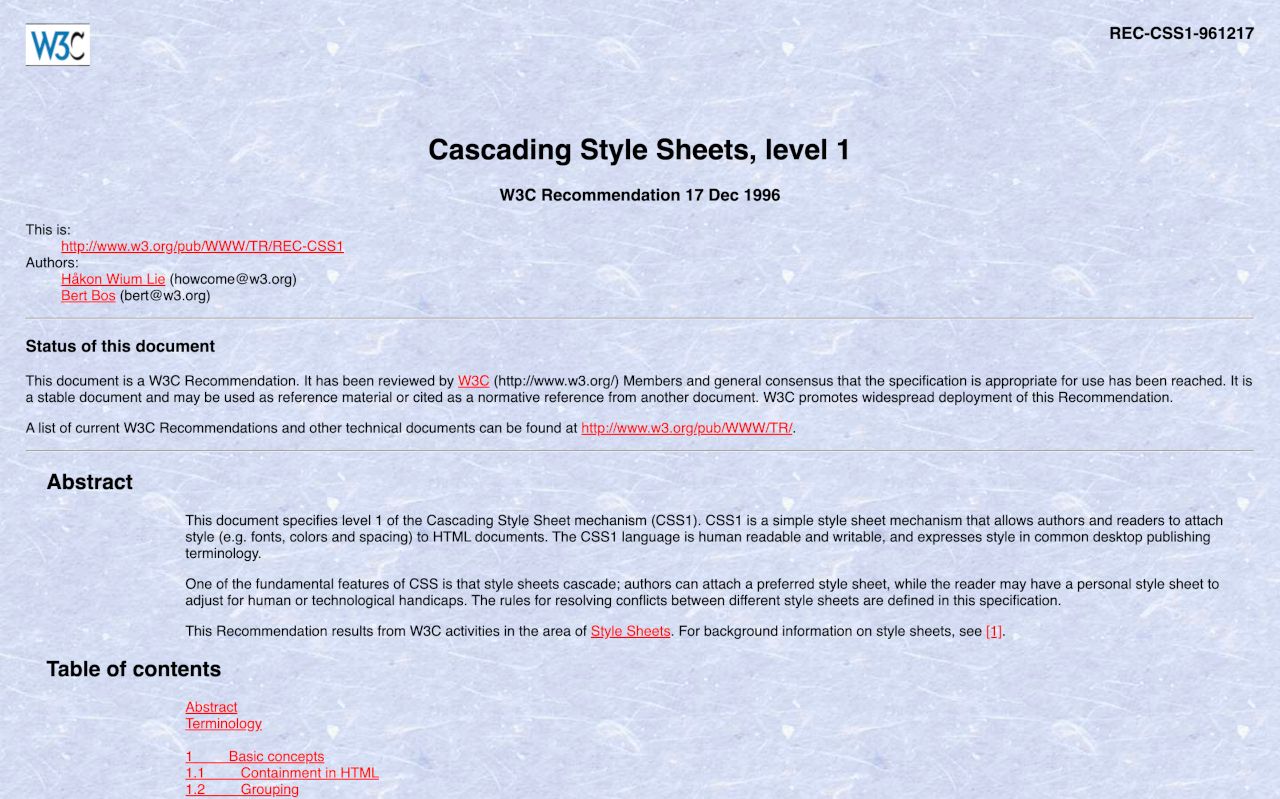
At the other end of the web design spectrum was the animation tool Flash, in which presentation and content were mashed together in one file. In fact, Flash couldn’t have been more different from CSS — the software was not open source, the source file format (FLA) was proprietary, and the output did not conform to web standards.
Flash arrived on the scene in August 1996, when a company called FutureWave Software released an animation tool called FutureSplash Animator. It was described as “a 2D animation product for the World Wide Web” that enabled users “to create vector-based drawings and buttons and then animate them.”
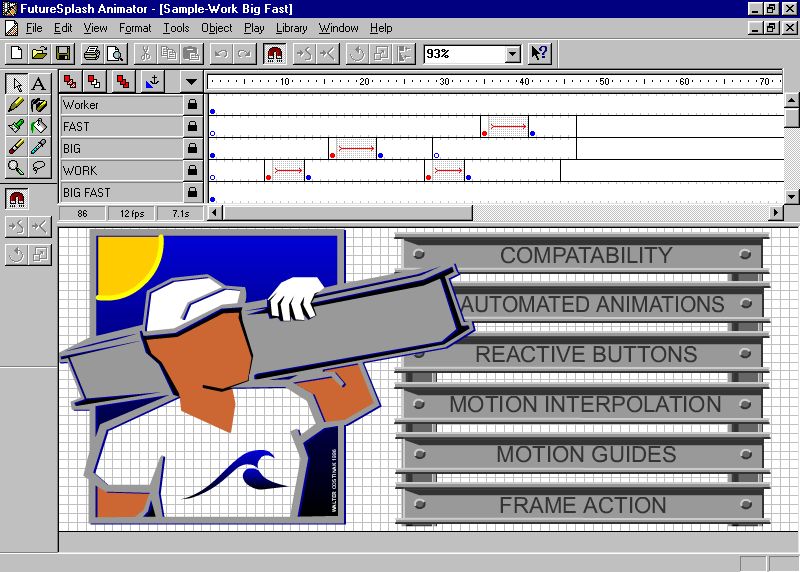
After its release, FutureSplash got early takeup by prominent websites like Microsoft’s MSN and The Simpsons. Then Macromedia acquired FutureWave in December 1996, which is when the name changed to Macromedia Flash.
Web Apps Emerge
Netscape made significant progress in 1996. In March it released Netscape Navigator 2.0 — which included the first version of JavaScript. But that was quickly followed by Netscape Navigator 3.0 in August 1996, which featured “fully integrated video, audio, 3D, and Internet telephone communications capabilities.”
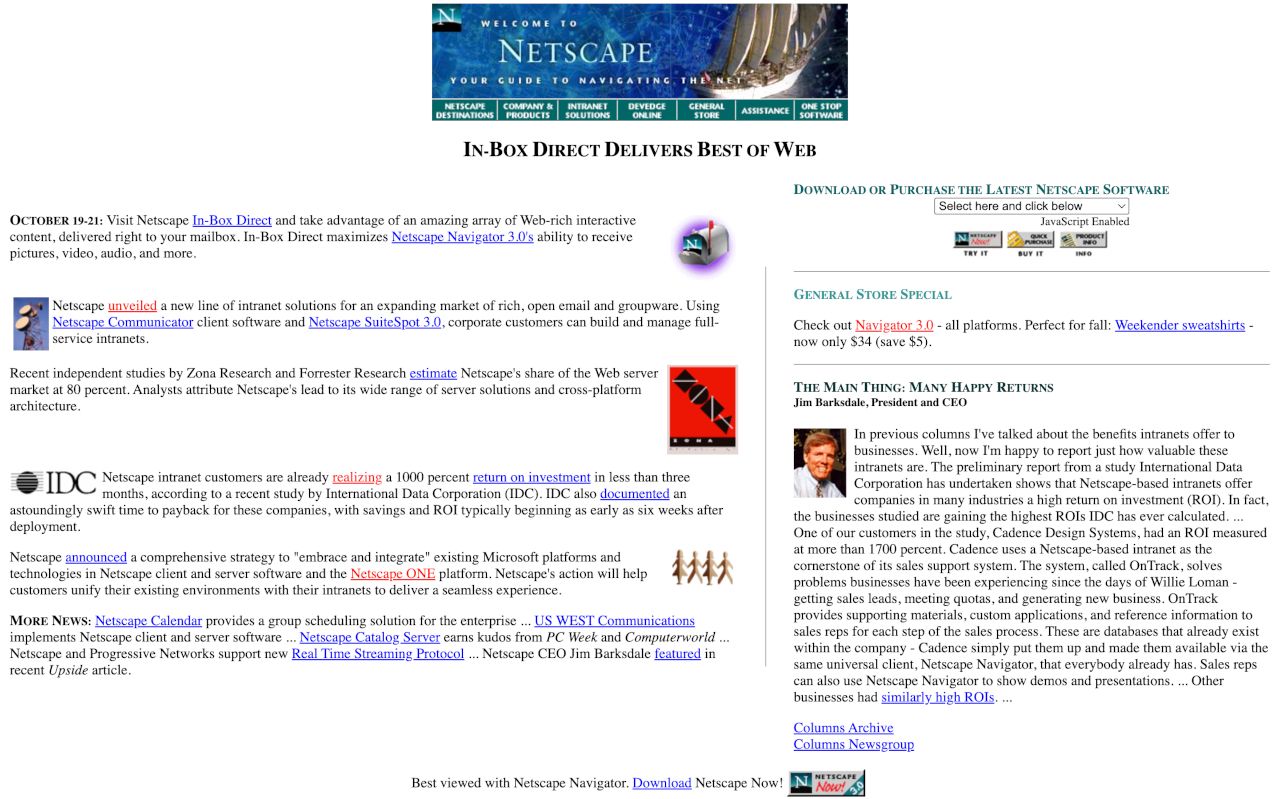
Netscape had big plans for its 3.0 browser. It was seen as a “universal client” to help expand what HTML could do. But Netscape was also looking to broaden its product offering with a suite of tools it called Netscape Communicator, which it began pitching to developers later in 1996. The ultimate goal was to pioneer a new type of software product: “network-centric applications.”
In a white paper released in August 1996, Netscape attempted to re-frame HTML from a simple document markup language to “a universal container for an application.” The boundaries were starting to be pushed regarding the purpose of a web page — and the functionality it could offer. A web page wasn’t just for presenting information anymore, Netscape was saying. It was now also a “container” for business applications.
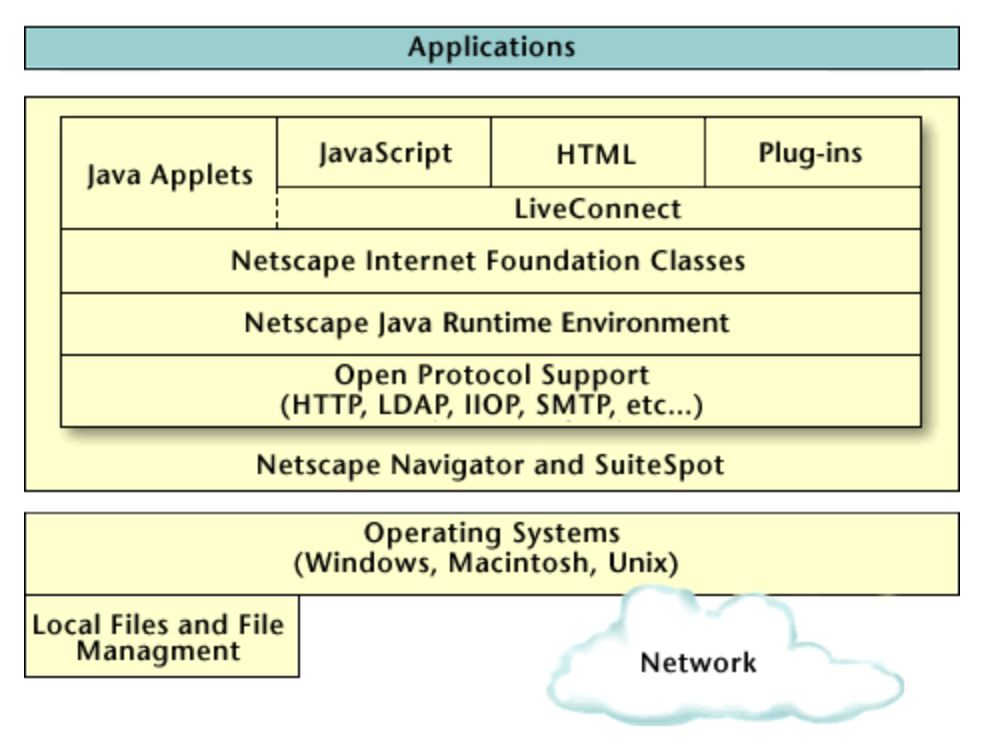
So browser technology in 1996 expanded beyond the initial document focused delivery of websites over 1994 and 1995. In 1996, we began to see web apps emerge — or at least the foundations being set.
Online Music 1996
For internet users in 1996, anything interactive running in a web browser in 1996 was known as a “plug-in.” This was the term, coined by Netscape, for a small third-party web application that could be added to a web page.
One of the earliest Netscape plug-ins was RealAudio, created by a Seattle company called Progressive Networks. The pioneering music site, IUMA, made use of it on their site during 1996.
RealAudio was one of the first technologies to enable streaming over the Internet; meaning to play the audio as it was being downloaded. Prior to RealAudio, web users would have to download an entire audio file before playing it — which could take hours.
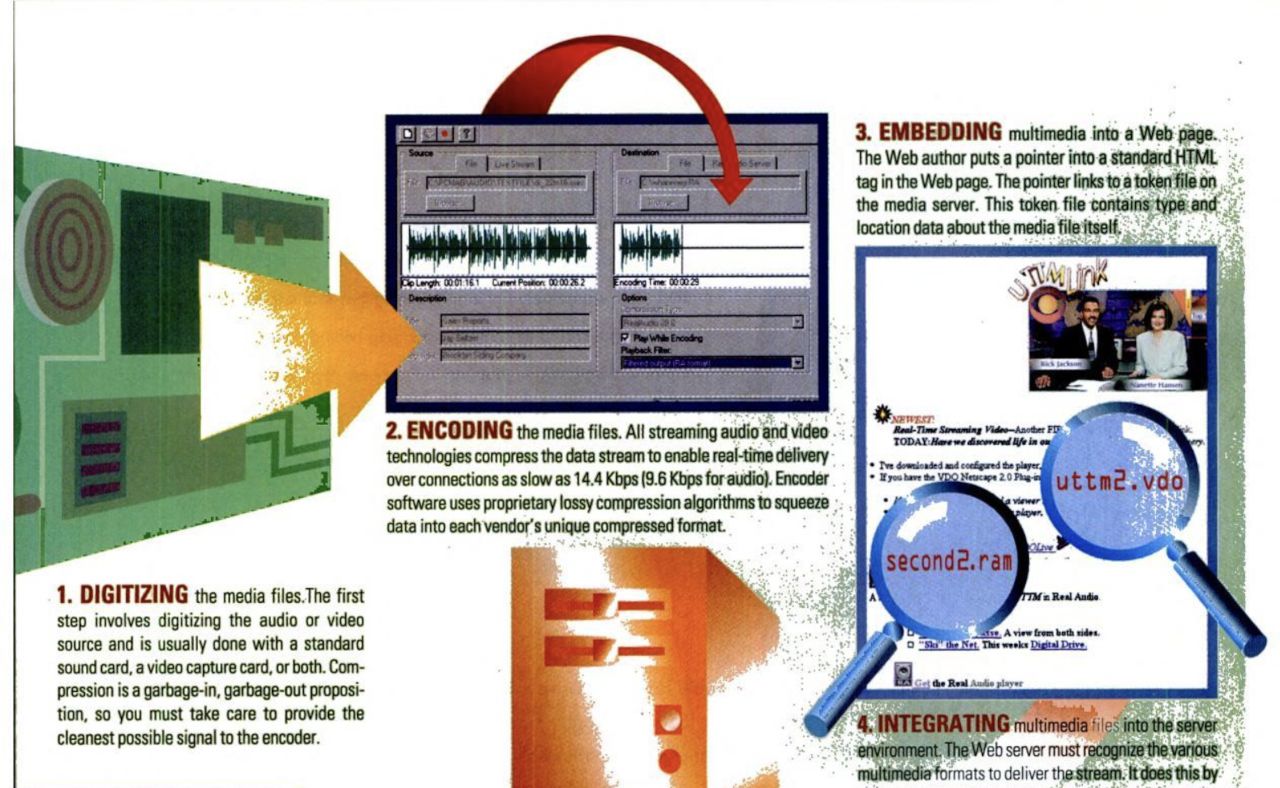
To try and counter slow internet connections, RealAudio adjusted the bitrate to fit the available bandwidth. So audio could even be streamed over dial-up modems — although quality would degrade. Unfortunately this made the product synonymous with the word “buffering.” But that aside, RealAudio was quite a remarkable technology for its time.
Online music technology continued to improve in the second half of 1996. Of particular note was the release of RealAudio 3.0 in September 1996, which allowed sites to offer "stereo sound at 28.8 [Kbps] and near CD-quality sound at higher bandwidths."
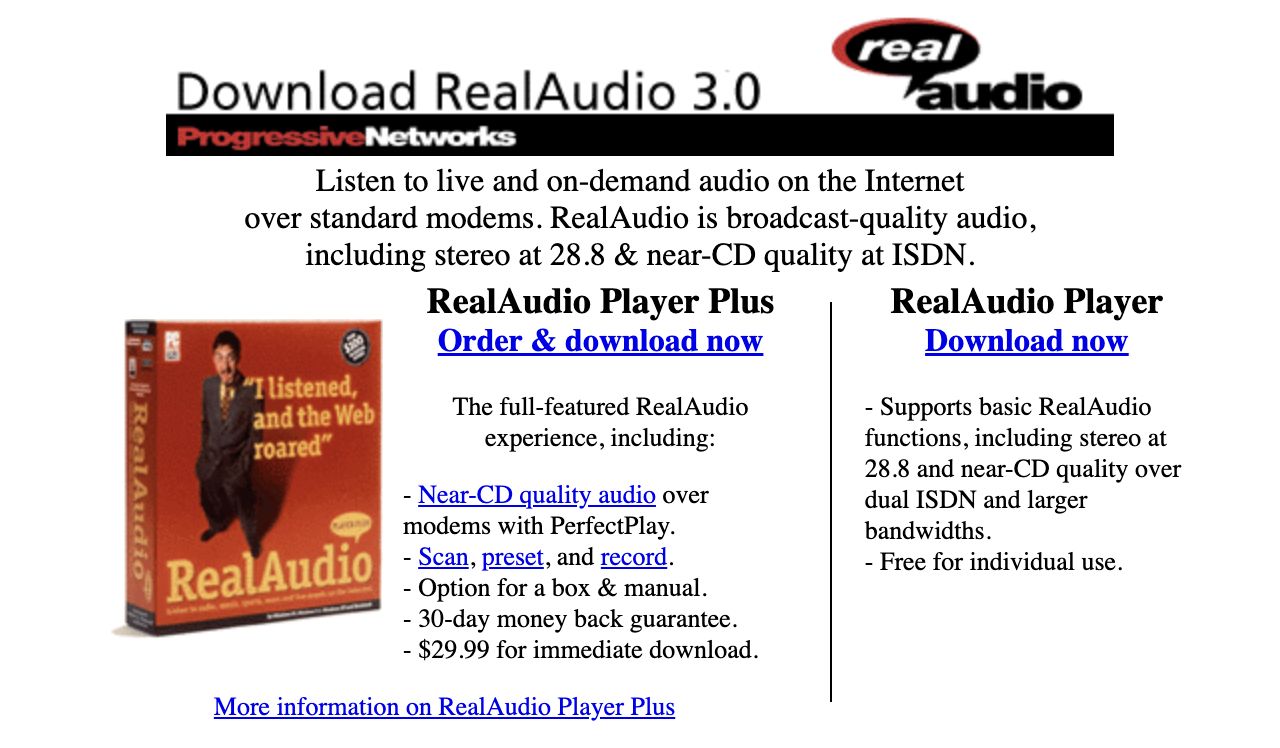
Rob Glaser, chairman and CEO of the company, trumpeted the 3.0 release as marking "the beginning of the next era in Internet multimedia broadcasting." For once, the hype was justified, because RealAudio 3.0 did indeed usher in the streaming era on the internet. Progressive Networks can legitimately be viewed today as the grandparent of today’s streaming giants, such as Spotify and Netflix.
Buy the Book
My Web 2.0 memoir, Bubble Blog: From Outsider to Insider in Silicon Valley's Web 2.0 Revolution, is now available to purchase:
- Paperback, US$19.99: Amazon; Bookshop.org
- eBook, US$9.99: Amazon Kindle Store; Apple Books; Google Play
Or search for "Bubble Blog MacManus" on your local online bookstore.